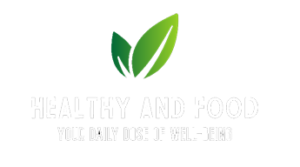The cosmetic industry is a huge business around the world that makes billions off consumers every year. Probably each and every one of us use a number of cosmetic products such as soaps, body cleansers, moisturizers, and make-up on a daily basis. In fact, according to a 2004 study conducted by the Campaign for Safe Cosmetics, women use an average of 12 cosmetic products a day. When we are applying these products on and all around our bodies, we’re probably not thinking about the tearless shampoo we have in our hands as a possible danger to our health. Shockingly, recent studies have shown that a large percentage of common household cosmetic products that a lot of us probably have in our homes right now contain a substance that can be harmful to our health and cause cancer.
1,4-Dioxane is a petroleum-derived contaminant that is thought to be a probable human carcinogen according to the U.S. Environmental Protection Agency. And according to the National Toxicology Program, it is a known carcinogen in animals. It is listed on California’s Proposition 65 list of chemicals that are either suspected or known to cause cancer and birth defects. 1,4-Dioxane is a byproduct that appears during the manufacturing of cosmetics. Although it can easily be taken out during the manufacturing process for pennies, it is often not. The Food and Drug Administration does not require companies to list it as an ingredient on their labels because it is produced during the manufacturing process.
Unfortunately, it doesn’t end there. Jeanne Rizzo, R.N., the executive director of the Breast Cancer Fund and a founding member of The Campaign for Safe Cosmetics stated, “Regrettably, 1,4-Dioxane contamination is just the tip of the icebergBecause the FDA does not require cosmetic products to be approved as safe before they are sold, companies can put unlimited amounts of toxic chemicals in cosmetics.” Incredibly, the FDA has no legal authority to require safety standards on cosmetic manufacturers and has only been able to ask companies to remove the chemical on a volunteer basis.
The FDA has known about 1,4-Dioxane since 1979 and has given very mild guidelines and recommendations to manufacturers that their products should not contain greater concentrations of 1,4-Dioxane than 10 ppm, or parts per million. Even with this lenient guideline, some 15% of the products tested exceeded this limit. Some of the products that contained the highest level of 1,4-Dioxane that were tested included: Clairol Herbal Essences Rainforest Flowers Shampoo, Oil of Olay Complete Body Wash with Vitamins, Johnson and Johnson’s Watermelon Explosion Kid’s Shampoo, Hello Kitty Bubble Bath, Disney Clean as a Bee Hair and Body Wash, and Gerber Grins and Giggles Gentle & Mild Aloe Vera Baby Shampoo.
If this is alarming to you, beware, because the list doesn’t end there. Until the cosmetics industry is more regulated, consumers must exercise caution while shopping. A greater knowledge of ingredients and their effects will keep you and your families safe.
























